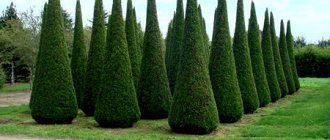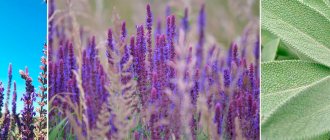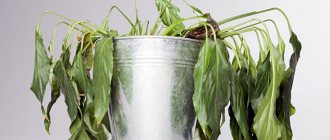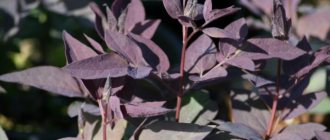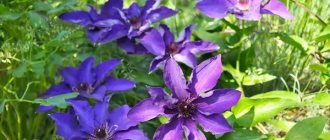It is difficult to imagine a colorful, three-dimensional design of a site without the use of beautifully flowering vines. They create a picture of lush vertical flowering. With their help, you can decorate any building, the wall of a house or garage, decorate a gazebo and separate a recreation area from the utility area.
The most famous, unusually beautiful and graceful climbing plant is clematis. Its name is Greek and means “long lash.”
This perennial liana ranks first in the world in popularity among flower growers and landscape architects. And, probably, it is difficult to find at least one design composition where this beautiful, bright, lushly flowering plant would not be used.
Growing clematis is not at all difficult when you know its characteristics. We will talk about them in this article.
Clematis as a plant for open ground
Clematis belongs to the ranunculaceae family. There are about three hundred varieties of this plant, which has won the tender love of all gardeners. They strive to plant it in the most prominent places in order to create comfort and a bright mood on the site. Often it is clematis that decorates the gate and is the first to “greet” guests. Thanks to the different types of this plant, which can be not only a liana, but also a shrub, you can even create flowering hedges.
Clematis flowers can be small or large, and their shapes and shades are simply amazing in their incredible diversity. Different varieties bloom at different times over a period of 3-4 months. Thanks to this, you can create a bright kaleidoscope of blooming clematis in your garden, which will delight the eye throughout the warm season from spring to early autumn.
The main decorative value of clematis is its abundant flowering.
Most often, clematis is cultivated in the ground, but it will also feel quite comfortable as a houseplant.
It is usually planted in pots, boxes or tubs (at least 60 cm high), placed in a well-lit place. Several holes must be made in the bottom of the container, then drainage and fertile soil are filled in, and after planting, a support for the plant must be installed. To provide the roots with coolness and shading, low-growing “neighbors” are planted in a pot of clematis.
Under comfortable conditions, clematis can bloom for up to five years without replanting.
TO GROW CLEMATIS - SELECT THE BEST VARIETIES
We have been growing and testing varieties of beautiful clematis for more than 15 years. From the many varieties we tested, we chose the best and created our own collection from them. These are the most unpretentious, reliable and very beautiful varieties. We invite you to get to know them.
Varieties of the first group. Hagley, Ashwa, Duchess of Albany, Carnaby, Negress.
Varieties of the second group. Sedliska's uterus, Copernicus, Viva Polonia, The Snow Queen, May Darling, Julka, Gabriel Narutowicz, Cayenne, Rosamund, Flash of Light.
Third group variety. Ville de Lyon.
These clematis are incredibly beautiful, frost-resistant and disease-resistant. We are sure that you will choose from them those that will decorate your garden for many years!
In which regions can you plant in open ground?
Thanks to large-scale breeding work to develop various winter-hardy varieties, clematis has quite easily taken root in the northwestern regions of the country, Siberia and the Far East. But in order to admire the bright colors of summer even in harsh climates, it is important to choose the right varieties whose vines successfully withstand frost.
Clematis flowers are painted in almost all colors of the spectrum, also differing in an infinite number of shades
Table: clematis varieties by planting region
| Name | Color | Where are they planted? |
| Nellie Moser | White and pink with bright lines in the center | Central Russia |
| Gypsy Queen | Violet-magenta | |
| Niobe | Purple red | |
| Hope | Powdery burgundy | Central Russia, Siberia |
| Luther Burban | Violet | Central Russia, Siberia, Ural, North-West, Far East |
| Ballerina | Snow-white | Central Russia, Siberia, Ural |
| Ville de Lyon | Carmine with a fuchsia tint and light stamens | Ural, Far East, Siberia |
| Alexandrite | Bright crimson | |
| Nellie Moser | Light pink | Ural |
| Gypsy Queen | Violet with a dark purple tint | North-West, Far East, Siberia |
| Jacqueman | Burgundy, pink, purple | Northwest |
| Melody | Pearl pink | |
| Elegy | Blue-purple | Southern regions |
| Climber | Pastel lilac | |
| Teal | Soft lilac | |
| Openwork | Pink-violet | |
| Ruitel | Dark purple |
Bloom
Bush clematis blooms slightly earlier than taller vines. From the beginning of June until the first days of September they delight us with their bright colors. If you cut off the fading flowers, the bushes will expel the buds. This is how many gardeners prolong flowering until cold weather. If it is not pruned, then at the very end of summer the branches of the bushes will be decorated with an elegant lace of fruits. These are numerous achenes with antennae and fluffs. This beauty will undoubtedly revive and decorate an empty garden.
Landing nuances
Most often, clematis is planted in open ground in mid-May. But if the seedling was purchased in the summer, planting should be done in September so that the plant has the opportunity to take root. This should not be done earlier because of the high probability of increased growth (which is not at all necessary during winter) and freezing.
Planting clematis consists of several stages:
- Choosing a location . The plant loves sunny, but slightly shaded areas, which allows it to maintain the brightness and richness of the flowers. In addition, it needs reliable protection from wind and drafts.
- Soil selection . Clematis likes light, nutritious, loose soil that quickly absorbs moisture. It is strictly forbidden to plant clematis in heavy, highly acidic soil, which will inevitably lead to the impossibility of its full development and death. It is important to take into account the level of soil moisture: the plant does not tolerate the abundance of groundwater. To create the most comfortable conditions and protect the roots from rotting, it is better to place the plant on a small artificial hill made by yourself. The presence of clay soil in the area chosen for planting clematis requires removal of moisture from the plant using a ditch dug and filled with sand.
- Pit preparation. Its depth should be no more than 70 cm. First, a layer of crushed stone is placed on the bottom, then a specially prepared soil substrate (a bucket of earth, half a bucket of humus, 100 g of slaked lime).
During autumn planting, the entire volume of soil is filled in immediately.
- Planting a seedling . The roots of the plant are evenly distributed across the width of the hole, after which the substrate is poured on top. If planting occurs in the spring, this is done in such a way that the depression is not completely filled, while the remaining soil is added in small portions until the fall.
When planting clematis near the walls of buildings, it is necessary to retreat 40 cm from them so that the roots cannot be damaged by rain flows from the roofs. If a composition of several bushes is planted, the gaps between them should be at least 25 cm.
Video: planting clematis in open ground
Integrifolia rosea
Quite a rare bush clematis with straight, thin and very numerous shoots no more than 40 cm long. The leaves are dense, dark green, pointed, with pronounced veins. The flowers are beautiful pink, up to 7 centimeters in diameter. They consist of four oblong, curved petals and numerous, thick, light-colored stamens. This variety blooms very profusely throughout the summer season.
Closer to autumn, beautiful flat seeds with cute fluffy “tails” appear on the bushes. They make the plant even more attractive. This variety is successfully used for borders, mass and single plantings, rockeries, and rocky hills. Does not require winter shelter.
Features of care
The main care for clematis consists of timely, sufficient watering and fertilizing.
Watering
Clematis should be watered at least once a week. During the summer heat, its frequency increases up to 2–3 times. At the same time, 1-2 buckets of water are enough for a baby bush, while for an adult - from 2 to 4. Covering the soil with a layer of mulch (peat, moss, humus) will help reduce the frequency of watering several times and slow down the growth of weeds around clematis. If this is not done, you should regularly (the next day after watering) loosen the soil, simultaneously breaking through the weeds.
Fertilizer
It is also important to know that certain types of fertilizers need to be used at different times:
- nitrogen-containing - during intensive growth;
- potassium - during the formation of buds;
- phosphorus - after the end of flowering.
In summer (after pruning), the plant is fed with a solution of complete mineral fertilizer (20 g per 10 liters of water) and a copper solution. Every year in the spring, the bushes must be watered with lime milk (dolomite flour and chalk). During the flowering period, all feeding is stopped so as not to drown out the activity of the plant itself.
To protect the roots from rot during frequent summer rains, you should cover the bottom of the trunk with wood ash.
Supports
There are several types of supports for vines (arches, pyramids, fan structures, cylinders), each of which is perfect for clematis. Supports allow you to create beautiful compositions and support plant stems. Another requirement is the strength of the construction material, which could withstand the weight of rapidly growing and moisture-laden clematis after rains.
The main thing is that the place where the stem is attached to the support is no thicker than 10–12 mm
Trimming
The correct formation and beauty of the bush depends on this procedure. Pruning is carried out several times a year:
- when planting (to form the crown and root system);
- in spring (to increase the flowering period);
- in summer (regulatory pruning);
- before wintering (taking into account the characteristics that each species requires).
The ability to tiller is a characteristic feature of clematis
Preparing for winter
Before wintering, it is necessary to remove leaves from clematis and trim off damaged and dried out branches. After this, remove it from the support, lay it on the ground and cover it using dry grass and leaves, straw, and sawdust.
Another option is to build a wire frame around a plant laid on the ground, covered with roofing felt, film, roofing felt or a plywood box. At the same time, it is important to ensure that the shelter is not sealed and has air access.
Clematis usually overwinters well. It is much more destructive for it to delay opening in the spring, as a result of which it can dry out.
In spring, it is necessary to free the plant from shelter as soon as the threat of night frosts has passed.
Top dressing
We have already mentioned that bush clematis loves fertilizers. It is advisable to fertilize twice a month, preferably with liquid fertilizers. The first time this procedure is carried out is in the spring, when the shoots are just beginning to grow. For this period, ammonium nitrate (20 grams per bucket of water), mullein (1:10), chicken droppings (1:15) are suitable. Five liters of fertilizer are poured under the bush.
Each subsequent feeding alternates: if the first one was organic fertilizers, then during the second one mineral substances should be used. Only during the period of bud formation can they be added simultaneously. During the growing season, it is useful to water clematis bushes with the addition of boric acid (no more than 2 grams per ten liters of water).
In late autumn, it is necessary to begin preparing the plant for winter - applying mineral or organic fertilizers (granulated superphosphate, potassium magnesium, potassium sulfate). This late fertilizing is carried out during digging; it is recommended to apply fertilizer to pre-watered soil. The best varieties of bush clematis are presented below.
Errors in care and their elimination
The beauty and health of any plant depends not only on proper care. It is equally important to select plants intended for the climatic conditions of a particular region.
Recent Entries
Lilac perennials that are beautiful, compact and do not crowd out other plants Why when buying seedlings you should not take the sellers’ word for it and how to determine the age of the plant using 3 signs Tomato seedlings have turned purple or whitish: why the color has changed and how to save the plants
In case of any changes in weather conditions, it is necessary to carry out preventive examinations and measures in order to prevent the occurrence of various plant diseases.
A common mistake made by inexperienced gardeners is improper watering of clematis, which causes its root system to die and the stems to become victims of diseases and pests.
Excessive dampness can cause clematis to be damaged by pathogenic fungi.
The most common diseases that clematis suffers from are:
- Withering. It is caused by a fungus and is accompanied by a loss of elasticity of the shoots, after which they dry out, wither, and without treatment the plant may die. The reasons may be stagnation of moisture and poor drainage of the soil. Treatment consists of removing all damaged shoots and watering the plant with a solution of “Fundazol” (1 g per liter of water), spraying with a 3% solution of copper sulfate (in spring), regularly loosening the soil and removing weeds.
- Gray rot. Plaque in the form of brown spots on leaves and shoots covered with grayish “fluff”. Usually appears during rainy times. To combat it, the affected areas are removed, and the plant is treated with a solution of Azocene or Fundazol.
- Powdery mildew . It is caused by a fungus and looks like a whitish coating on the plant, similar to spilled flour. At the same time, its growth and flowering slows down. For treatment, spraying with a copper-soap solution (25 g per 250 g, respectively, diluted in 10 liters of water) or a solution of soda ash (40 g per 10 liters) is used.
- Rust. Forms brown spots on the leaves and leads to their drying out and deformation of the entire bush. A solution of potassium permanganate (medium strength) will help fight rust.
Reproduction
Most types of bush clematis are bred:
- layering;
- cuttings;
- dividing the bush;
- seeds.
For layering, the outermost shoots are placed in a pre-prepared groove, raising 10-16 cm of the top above the ground. Sprouts appear from nodes sprinkled with soil after 20-30 days. All this time, the soil above the stem is watered, and a solution of the mineral complex is added once. The sprouts are replanted the following year.
Cuttings are taken from the shoots of a 3-year-old bush before flowering. After treating with a growth stimulator, the sections are rooted in a mixture of sand and peat. A mini-greenhouse is installed on top. The sprouts are planted every other year, leaving them to overwinter well covered outside.
The bush is divided at the age of 5-6 years and transplanted into ready-made holes.
Some types of clematis are propagated by seeds, which take up to 2 months to germinate. The seeds are first soaked in water for 6-8 days, changing the solution 3-4 times a day. Bush clematis shoots appear in 40-58 days. A month later they are planted in pots, and then in May they are transferred to the garden - to the school. A permanent place will be determined next season.
Pest and disease control
No less dangerous for clematis are pest invasions, such as:
- Aphid. It settles on the underside of leaves, feeds on their juice and leads to drying and curling. To eliminate it, spraying with “Fitoferm” (2 mg per 1 liter of water) helps.
- Spider mite. Causes white spots to form on the bottom of leaves and cover the plant with cobwebs, causing it to appear weakened. Insectoacaricides and acaricides (toxic drugs diluted at 1 mg per liter of water) are considered effective means of combating it.
- Slugs. They eat leaves and stems at night. Against them, ammonia is used (2 tablespoons per liter of water), which is used to treat the plant.
Slugs can be collected manually after dark
